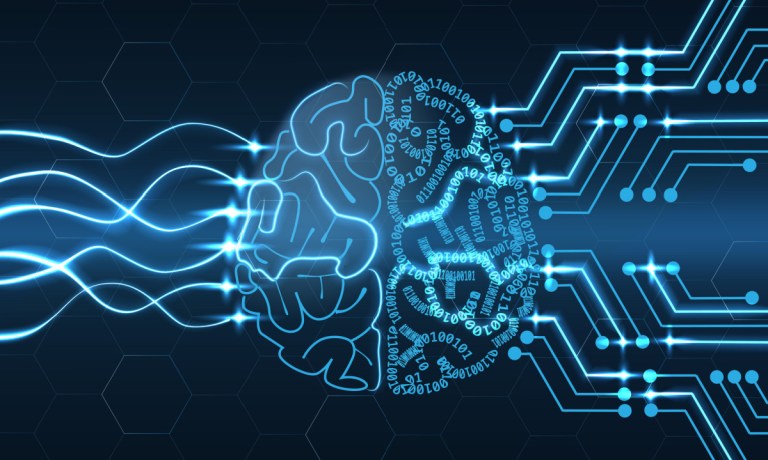Growing Enterprise AI Adoption Shows Integration Friction Is No Fiction

On the one hand, firms don’t know what they don’t know.
On the other, many believe that large language model-powered generative artificial intelligence (AI) tools might just know everything.
After all, business success and competitive advantage in the 21st century frequently boil down to the ability to activate best-in-class data in real-time.
That’s why businesses of all shapes, sizes, and sectors are increasingly keen to integrate the revolutionary capabilities of ChatGPT-like tools into their existing workflows.
There’s just one problem: for as easy as it is to use, AI remains, at least to-date, far from a plug-and-play solution. Particularly for larger enterprise organizations with meaningful concerns around data security and output integrity.
And despite the hyper rapid growth and commercialization of AI, firms are typically taking a slow-but-steady approach to onboarding the new tech.
This means that integration of AI innovations is going about the same as any other enterprise-level software adoption or modernization process — with a lot of handholding and cross-departmental stakeholder buy-in.
Read also: How AI Co-Pilots Can Future-Proof the CFO Office
A Lack of in-House Know-How
The tech giant Amazon has even gone so far as to set up a new “Generative AI Innovation Center,” announced last week (June 22).
The $100 million program hopes to connect industry experts from AWS (Amazon Web Services) customers and partners worldwide to “accelerate enterprise innovation and success” with generative AI and machine learning (ML) tools.
“Customers around the globe are hungry for guidance about how to get started quickly and securely with generative AI,” AWS said in a statement.
The experts that PYMNTS has interviewed consistently emphasized that AI should be viewed as a way to augment and enhance, not replace, the work done by employees. That’s because, while learning capabilities of modern AI have reached the technical tipping point where today’s algorithms can transform large datasets into projects that augment, enhance and revolutionize business processes, some managers argue that there will always be the need to verify AI-driven outputs by keeping a human in the loop.
After all, AI doesn’t replace labor outright. Rather, it transforms how work is organized and activates previously blocked process efficiencies by bringing multimodal processes together under one roof and streamlining that output.
While AI tools now advance in days and weeks, behind generative AI’s hockey-stick growth chart of successful commercialization across the marketplace is a long history of experimentation, research and investment.
“This didn’t happen overnight,” Amir Wain, CEO and chairman at i2c, told PYMNTS earlier this month. “There’s been a lot of work going on in AI, and now the product is at a stage where it can be deployed commercially across various applications.”
See also: Generative vs Predictive AI’s Role Across the Future of Payments
Providing Enterprises With Change-the-Game Utility
AI tools harbor the exciting potential to augment historically labor-intensive workflows by making them smarter, more productive, and increasingly optimized.
Firms looking to take advantage of AI tools and integrate them into their organizational processes need to look no further than the best practices used when modernizing any other historical process effectively and securely.
“You don’t want to boil the ocean and try to solve for everything at once. Firms need to look at [transforming their existing processes] as a kind of crawl-walk-run mentality to get to where they need to go,” Corcentric President and COO Matt Clark told PYMNTS.
“The next evolution is companies realizing that they don’t have to do this themselves with their own resources,” he said. “That there’s an opportunity to offload some of this stuff by introducing a third party that can streamline everything.”
In order to achieve organizational buy-in, treasurers need to “put on their sales hat” and find pockets of opportunity by understanding what is important to various internal firm stakeholders and showing them the cost benefits of modernizing legacy systems, Krista Sharp, co-head of Treasury Services for Middle Market Banking and Specialized Industries at JPMorgan Chase, told PYMNTS.
And while digital innovations like AI can often be viewed as transformative silver bullets, there already exist countless software solutions today which can capably solve for a myriad of operational headaches and bottlenecks, making it critical for firms to establish a true business use case before they go ahead and invest in any new AI tool.
Echoing that sentiment, Shaunt Sarkissian, founder and CEO of AI-ID, told PYMNTS last month that, “no matter the ways and means in which AI is being harnessed, it’s incumbent on firms to mull how they can enhance value rather than just chase a trend.”
Fortunately, many of the areas where AI technology can have an immediate, easy-win impact include the treasury department and the payments environment by helping firms automate billing and accounting reconciliations, and update customer relationship management (CRM) and enterprise resource planning (ERP) systems in real time without the need for manual intervention.
The technology can also significantly improve customer service, help desk service, software engineering, business, and IT operations.